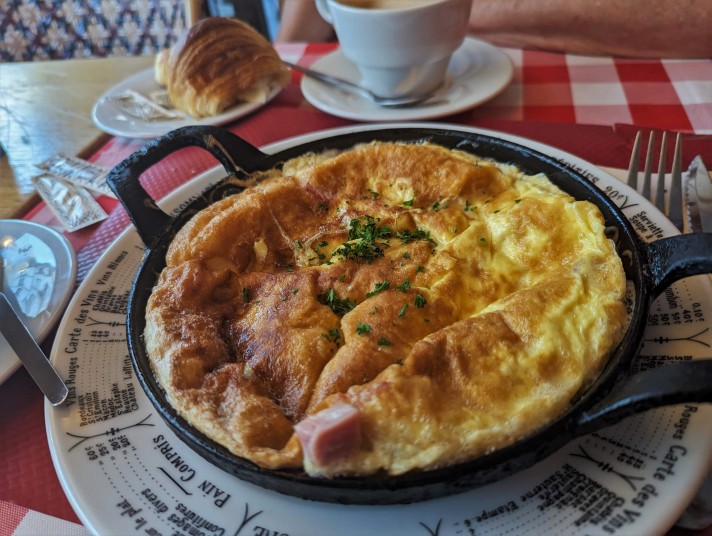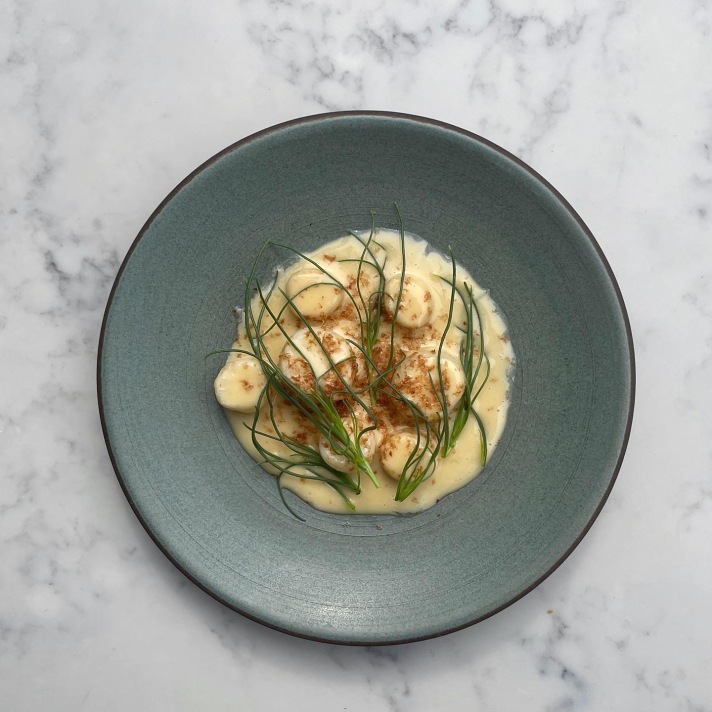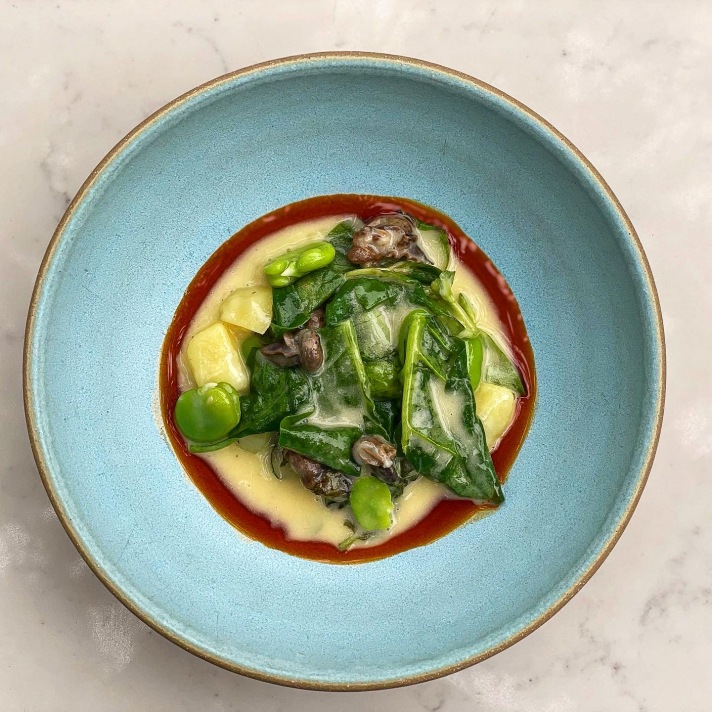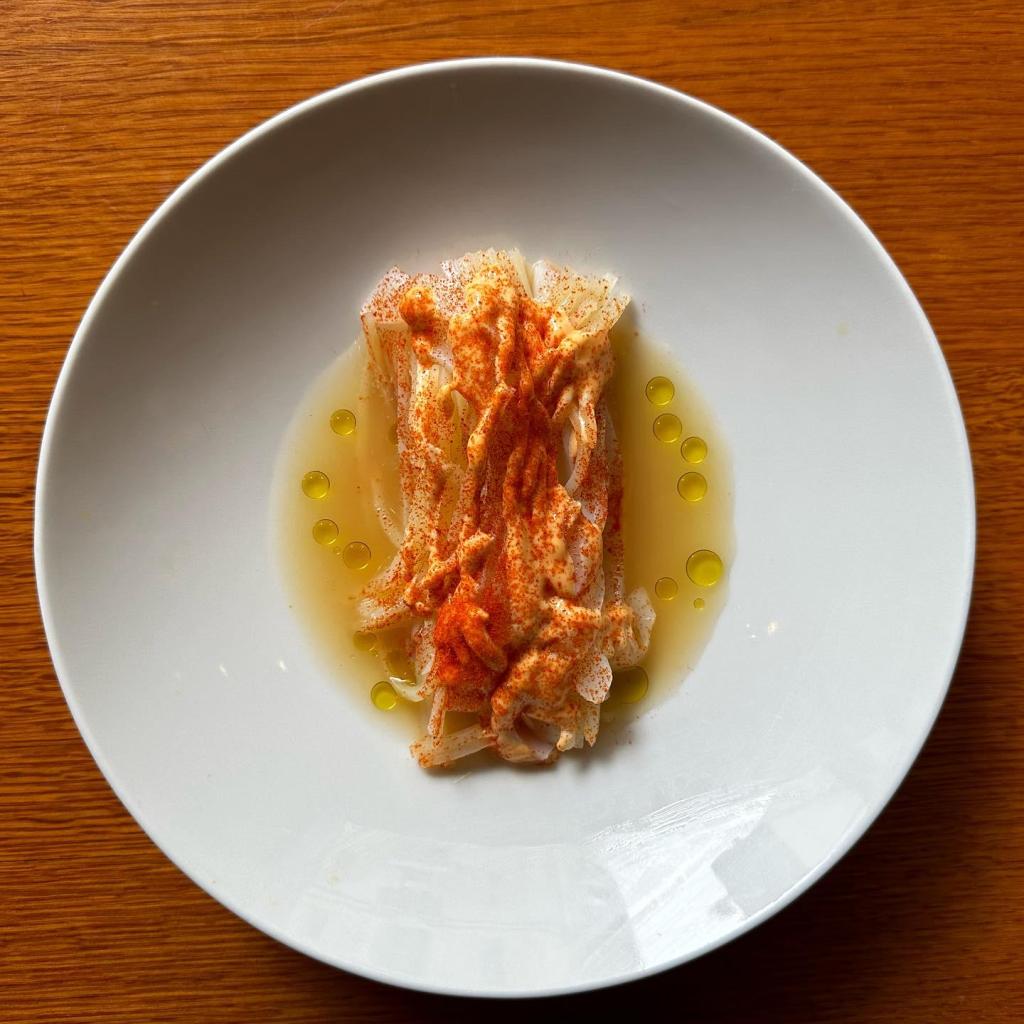My Sunday column in the Baltimore Sun, reported from a recent trip to Paris, is about Sam Schwarz, a young man from Baltimore and Towson who is living a dream to be a chef in a creative kitchen in the French capital. The column describes his odyssey — dropping out of a “grownup job” with an insurance company to “follow his bliss” to a career in cooking. We spoke in a little cafe last month, and then I followed up with some questions by email. Some of Sam’s responses follow, including his descriptions of three of his most original dishes. As you’ll see, he has a lot of observations to share about food — and he’s creating dishes at an impressively sophisticated level.
What part of becoming a chef has been the most satisfying?
The people I have been introduced to along the way. I’ve been fortunate enough to work with people from dozens of countries, all with different backgrounds and upbringings and knowledge, and have developed a network of friends and colleagues around the world. The group of people that I am fortunate enough to be surrounded by has been primarily created thanks to sharing meals or drinks in restaurants I have worked in, my friends have worked in, or that we have gone to eat in together. The act of sharing a meal with someone is one of the most important yet easiest things to do. The food doesn’t need to be fancy or expensive, and normally the simpler it is the more love you feel. Food can share so much about someone’s background and history and can be a medium to translate one’s emotions into something delicious that can be shared with a group of friends or strangers. The more I cook for people, or am cooked for, and share meals with friends and strangers, the more that network seems to grow and flourish.
On the many things he learned at Septime, the Michelin-starred restaurant in Paris: One really important thing my time at Septime taught me was the importance of eliminating food waste and always looking for alternatives to use leftovers or food scraps produced during other preparations. We were always looking to repurpose scraps or what might be often thought of as waste and turn them into other delicious and interesting preparations that could either be used right away, or in a future season when the product is no longer available fresh.
What is it about the French and food? We assume they have higher standards, as a matter of being French of any social class, than Americans generally. But is that true still? Have you found it so?

The French have such a deep and intricate relationship with food that just doesn’t exist in the United States. The standard being higher comes from a long history with food and locality of ingredients and the importance of cooking seasonally. The French are surrounded by food from birth. Walk through any village in France and there will be a local baker, every family has their recipes for a certain dish coming from a specific region. Food runs deep here, and is prominent in movies, books, songs, and daily conversation. People talk about what they had to eat yesterday, what restaurants they want to go to, the ingredients they see at the market. Food is a major percentage of the vernacular here. I think now you can get really great quality produce, meat and dairy in the United States, but the standard that the consumer sees as acceptable for human consumption is definitely higher in France than in the U.S., but I think that has a lot to do with a much lower wealth disparity in this country than in the United States. People have better access to quality ingredients in France and the regulations put on food are much more practical here than in the US as well. There is a lot of really good yet disturbing literature on the American food system that should be mandatory for us as citizens to read.
In any of the kitchens where you’ve toiled, have you created an original dish you’re most proud of?

The first would be young hakurei turnips, that are blanched in heavily salted water, cut in rounds and semi dehydrated to mimic the texture of scallops. They are served underneath a Sauce Saint Malo (a classic French sauce made from fumet {stock], mustard and anchovy), with grated dried beef and agretti [wild green]. It was a dish that was vegetable-forward and would have normally been done with scallops but made the diner realize that the vegetable was the real star even if the sauce and garnish were protein. The turnip remained juicy and chewy, the sauce provided the fat and depth, and the agretti a bit of freshness.

The second was a summer stew of new potatoes, fava beans, malabar spinach, purslane, basil and escargot. Everything was bound by a butter seasoned with basil vinegar from our previous year’s basil scraps, enveloped in a smoked paprika oil. It was a dish that really showcased the summer produce and seemed effortlessly familiar while eating and extremely unpretentious yet showcased simplicity in technique and the excellence of the quality of product we were sourcing.

A recent dish from Sam’s current position as sous chef at Soces in Paris: Cuttlefish with crunchy potatoes, chilled bouillabaisse and rouille. … We just barely blanch the cuttlefish and cut it into thin tagliatelle-like strips, then layer it with tender-cooked potatoes, topped with rouille (a classic southern French sauce to accompany bouillabaisse, made with roasted garlic, potato and saffron) and a chilled bouillabaisse made using classic rockfish. It has very familiar tastes to a French person but, done in a very technical way, also looks very simple on the plate.
Read more: My columns in the Baltimore Sun, available with a Baltimore Sun digital subscription.
Published by Dan Rodricks


Dining and Cooking